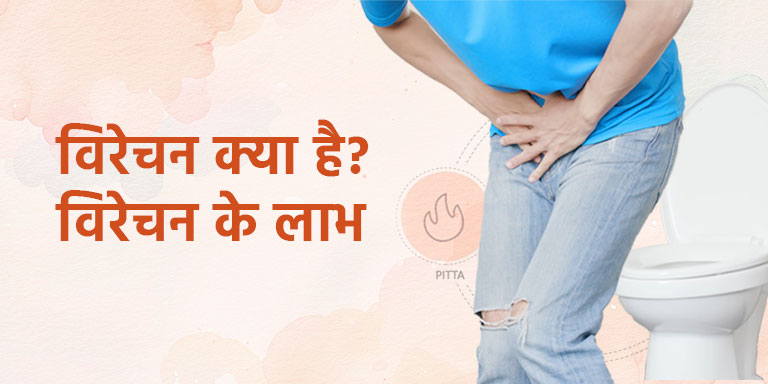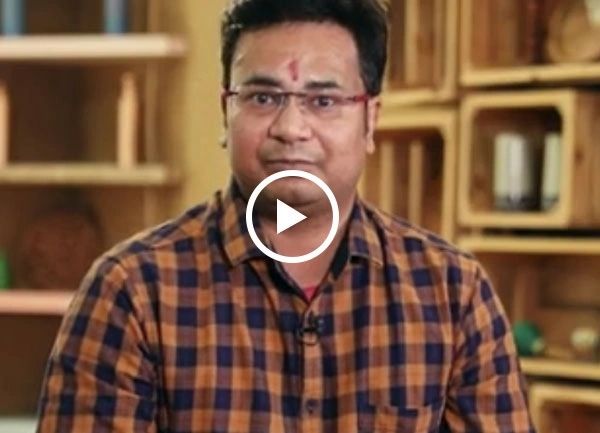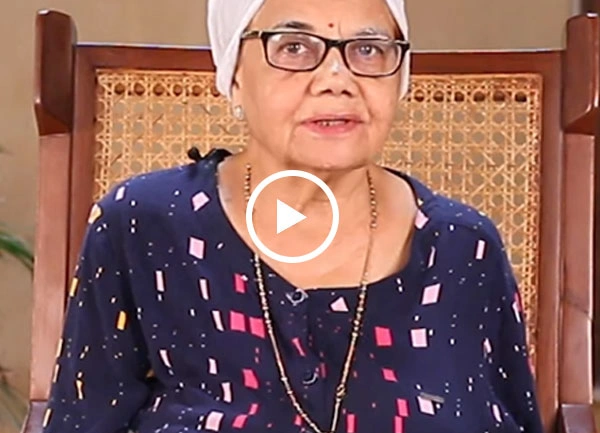What is Vata dosha?
Vata dosha is one of the primary doshas that predominantly governs bodily movements and the functioning of the nervous system. If you possess a predominantly Vata constitution, you will observe evident expressions of Vata dosha qualities in both your mind and body.
Vata dosha characteristics
The characteristics of Vata dosha, such as being light, cool, dry, and quick, will be noticeably present. Physically, you are likely to have a naturally slim and slender physique. You may frequently experience Vata Dosha Symptoms, such as cold hands and feet, and your skin tends to feel cool and dry, particularly in the extremities. Your sleep patterns may occasionally be disrupted or elusive.
Vata Dosha Symptoms:
- Unusual sensation of being cold
- Muscle spasms, contractions, and unusual pains
- Roughness of the skin and lips
- Excessive restlessness, anxiety, fidgeting, muscle twitching, and palpitations
- Low weight and difficulty gaining weight
- Insomnia or disrupted sleep patterns
- Skin, hair, lips, ears, and joints are experiencing dryness
- Internal dryness causes bloating, gas, constipation, dehydration, and weight loss
- Feelings of dizziness and restlessness
Additionally, if you have Vata Dosha, you will have an agile, quick-thinking mind; however, you may also be prone to forgetting things as quickly as you learn them.
Emotionally, you tend to be fluid and adaptable. Individuals with Vata Dosha Symptoms often exhibit creativity and dynamism, constantly being on the move and frequently finding themselves in a rushed or hurried state.
It's important to understand that we all have some degree of Vata in our minds and bodies. These characteristics outline the basic attributes of Vata dosha.
What factors can cause High Vata dosha?
The qualities you embrace in your life will amplify the dosha associated with them. In the case of Vata, these qualities include dryness, lightness, coolness, roughness, subtlety, and mobility. By consistently subjecting yourself to Vata-related qualities, you will heighten the Vata dosha within you, affecting your mind, body, and emotions. Here are some factors that can increase your Vata Dosha:
- Consumption of cold food can raise Vata levels.
- Engaging in excessive fasting, intense exercise routines, prolonged brisk walks, and similar weight loss activities can increase your Vata.
- Extremely cold or dry weather can increase your Vata.
- Consumption of hard alcohol and smoking imbalances your doshas.
- During winter, cold weather raises Vata at the skin level, leading to dryness.
- Foods that cause dryness in the mouth, skin, or stools can exacerbate dryness and aggravate Vata.
- Excessive sexual activity can contribute to dryness and increase Vata.
- Injuries to vital points in the body (in Ayurveda terms: Marmas) can increase Vata levels.
- Dryness in emotions, including harbored resentment, lack of love or affection, repressed anger, and aloof behavior, can contribute to Vata imbalance.
How to Balance Vata Dosha
Vata dosha treatment aims to pacify the excess Vata energy and alleviate symptoms associated with its imbalance. It typically involves a combination of lifestyle modifications, dietary adjustments, herbal remedies, body therapies, and mind-body practices.
To pacify Vata, warm and nourishing foods are recommended, along with regular routines and adequate rest. Herbal formulations and oils are used to provide grounding and nourishment to the body. Abhyanga, a therapeutic oil massage, is often employed to calm the nervous system and promote relaxation.
Additionally, practices such as yoga(mentioned below), meditation, and pranayama (breathing exercises) help to balance the Vata energy and enhance overall well-being. The holistic approach of Vata dosha treatment with Jiva Ayurveda aims to restore harmony and vitality, allowing individuals to experience a sense of rejuvenation and inner balance.
Vata Dosha Ayurvedic Home Remedies
- Take a spoonful of a paste made with turmeric powder (Haldi) and honey every day.
- Twice a day, add ¼ tsp of cinnamon to warm milk, which is especially beneficial for balancing Vata.
- Include herbs and spices like garlic (lehsun), dry mango powder (amchur), asafoetida (hing), cloves (laung), dry basil, mustard seeds (saraso seeds), poppy seeds, and saffron (kesar) in your preparations as they enhance digestion (agni).
- Balance Vata by adding a teaspoon of garlic paste to soups, vegetables, etc.
- Cook food in ghee or sesame oil as these healthy oils reduce Vata
- Enjoy an herbal tea made with Brahmi leaves (Bacopa monnieri) to help with Vata imbalance. It provides antioxidants and can be a caffeine-free alternative.
Twice a day, have warm milk with ¼ tsp of Ashwagandha, which helps balance Vata due to its heating qualities.
Moderately consume dairy products and sweets to pacify Vata.
These simple practices and dietary adjustments can support the balance of Vata dosha in the body.
Yoga Recommended to balance Vata Dosha
Yoga is highly recommended for balancing Vata dosha, as it helps to cultivate stability, grounding, and calmness in both the body and mind. Here are some yoga practices that can be beneficial for balancing Vata:
Surya namaskar:
Surya Namaskar, or Sun Salutation, helps balance Vata dosha by generating warmth, promoting circulation, and grounding the body. The flowing movements, synchronized breathwork, and mind-body connection of Surya Namaskar harmonize Vata's airy nature, fostering stability and vitality. Regular practice brings balance to the body and mind, alleviating Vata imbalances.
Supta Virasana:
Supta Virasana, or Reclining Hero Pose, balances Vata dosha by grounding and stabilizing the body. It promotes deep relaxation, opens the chest and abdomen, stimulates digestion, and stretches the thighs and hips. Regular practice of this pose brings calmness, releases tension, and enhances Vata balance.
Paschimottanasana:
Paschimottanasana, or Seated Forward Bend, aids in balancing Vata dosha. This pose promotes grounding, relaxation, and stretches the entire back of the body. It calms the nervous system, improves digestion, and alleviates Vata-related symptoms such as restlessness and anxiety. Regular practice fosters Vata balance, harmony, and tranquility.
Uttanasana :
Uttanasana, or Standing Forward Bend, plays a role in balancing Vata dosha. This pose promotes grounding, relaxation, and stretches the hamstrings and spine. It enhances blood circulation, calms the mind, and relieves anxiety and restlessness. Regular practice of Uttanasana supports Vata balance, stability, and a sense of inner calmness.
Balasana:
Balasana, or Child's Pose, is beneficial for balancing Vata dosha. This pose promotes grounding, relaxation, and releases tension in the body and mind. It soothes the nervous system, calms the mind, and fosters a sense of inner peace. Regular practice of Balasana helps balance Vata, reducing anxiety, promoting deep relaxation, and restoring harmony to the body and mind.
Dhanurasana:
Dhanurasana, or Bow Pose, is effective for balancing Vata dosha. This pose activates and energizes the body, promoting warmth and circulation. It stretches the entire front of the body, opens the chest, and stimulates the digestive system. Dhanurasana also helps relieve stress and anxiety, bringing balance and harmony to our body.
Ustrasana
Ustrasana, or Camel Pose, is beneficial for balancing Vata dosha. This pose opens the chest and stretches the front of the body, increasing energy flow and promoting emotional well-being. Ustrasana stimulates the digestive system, relieves anxiety, and calms the nervous system. Regular practice of Ustrasana supports Vata balance, bringing stability, vitality, and a sense of inner calmness.
Food for Vata Dosha
Successfully following a vata-pacifying diet is not about strict rules but focusing on generalities and overarching patterns. Any progress towards a more vata-pacifying diet is a win. Here are some food for vata dosha tips:
Some general food conditions to follow:
Consume Warm Over Cold: Emphasize warm and energetically warming foods, use digestive spices generously, and avoid cold, frozen, carbonated, and raw foods. Freshly cooked foods are best.
Opt for Moist and Oily Over Dry: Opt for cooked foods over raw, use high-quality oils or ghee, stay hydrated with warm or hot fluids, and include moist foods like berries, melons, and yogurt. Minimize drying foods like popcorn and dried fruits.
Favor Grounding, Nourishing, and Stabilizing Over Light: Balance vata's lightness with grounding and nourishing foods. Choose cooked grains, spiced milk, root vegetables, stewed fruits, nuts, and seeds. Minimize highly processed foods and stimulants like caffeine.
Smooth Over Rough: Cook rough foods well and serve them with generous amounts of butter, oil, or ghee. Opt for smooth-textured foods like bananas, rice pudding, puréed soups, and root vegetables.
Preferred Tastes for Vata pacifying food habits:
Sweet: Emphasize naturally sweet foods like fruits, grains, root vegetables, milk, ghee, yogurt, eggs, nuts, seeds, oils. Avoid refined sugars and sugary foods.
Sour: Include sour additions like lemon or lime juice, vinegar, kimchi, sauerkraut, miso, and sour fruits (eaten separately and in moderation). Sour taste improves digestion and energizes.
Salty: Use quality sea salt or natural mineral salt in moderation. Salt stimulates appetite, digestion, and moisture retention.
What to Minimize?
Pungent: Moderate pungent spices and avoid excessively hot and dry foods like chilies, radishes, and raw onions.
Bitter: Minimize bitter greens, bitter melon, Jerusalem artichokes, and chocolate. Bitter taste is cooling and drying.
Astringent: Reduce astringent taste found in legumes, certain fruits, vegetables, grains, and baked goods. Astringent taste is dry and rough.
To maintain healthy eating habits, it is important to create conducive conditions for meals.
Firstly, select a peaceful environment that allows you to give your full attention to nourishment. Secondly, establish a routine by consuming three balanced meals at regular times, which aids in balancing Vata and enhancing digestion.
Additionally, ensure that your food is well-cooked, served warm, and accompanied by oil, ghee, and digestive spices. Lastly, it is advisable to avoid fasting and instead focus on regular nourishment.
By consistently following these immediate remedies, you can harmonize your Pitta dosha and embark on a journey of balance and well-being!
If you find these tips difficult to follow, let us help you with customized suggestions as per your routine and lifestyle. You can always consult our expert Ayurvedic doctors for personalized guidance based on your specific needs and constitution.
We’re happy to help you on your healing journey!
































